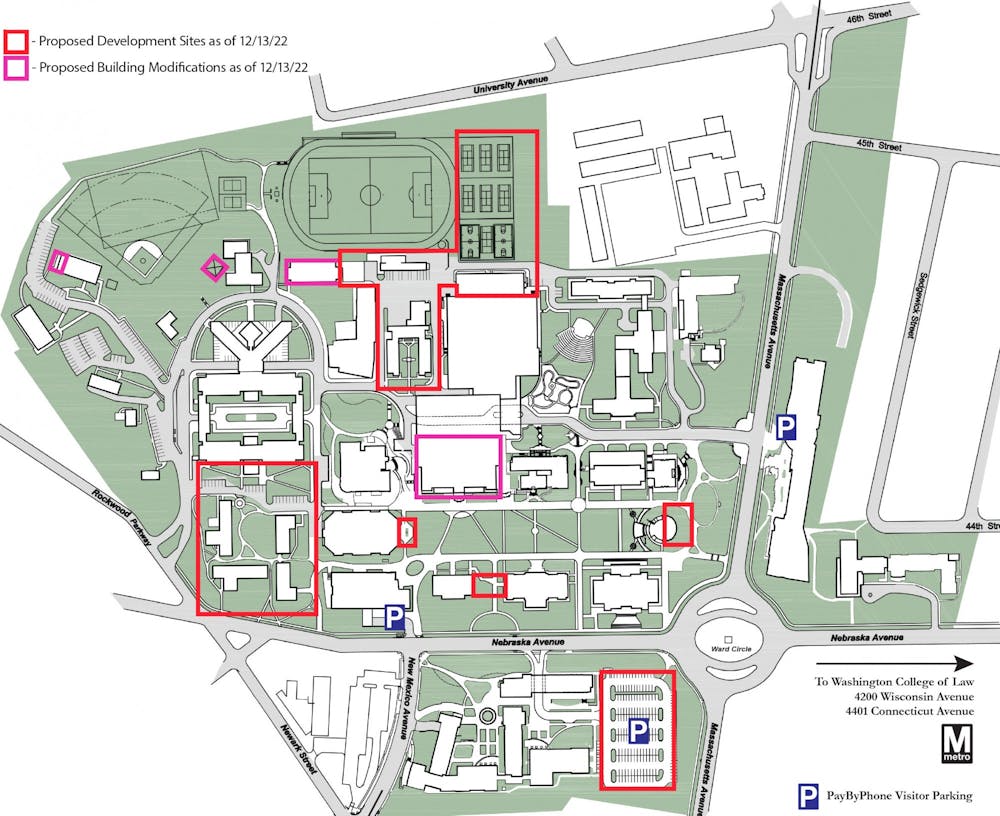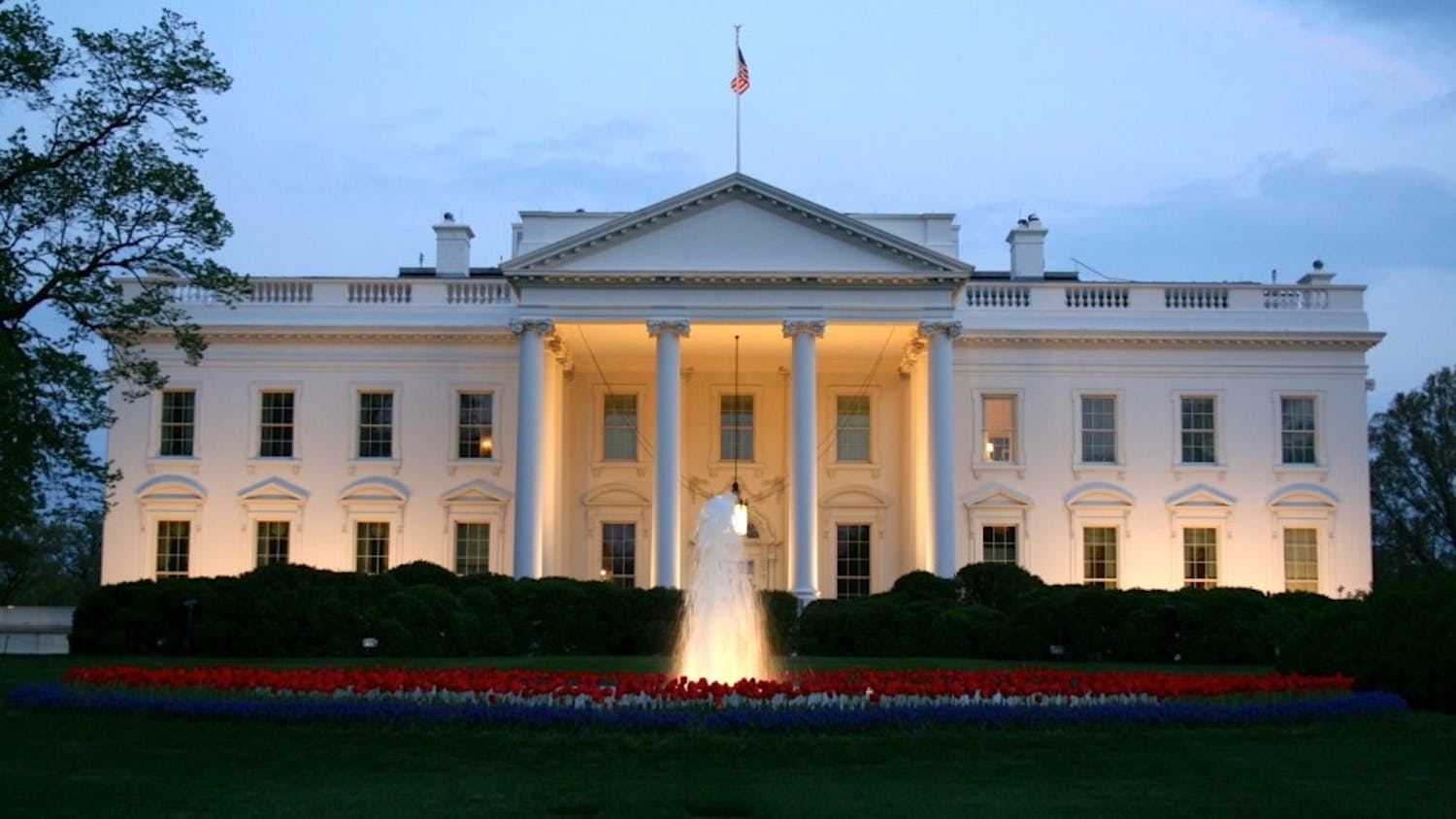Chuck Elkins first got involved in neighborhood relations in 2013, when American University had a “near zero response” to his complaint that AU students living in a house two doors down from him were having noisy parties late at night.
Elkins, an advisory neighborhood commissioner in Spring Valley, found the University’s response unsatisfactory. In the spring of 2014 he conducted a benchmark report comparing AU’s handling of off-campus student behavior to other local universities. He used it to “lobby” the AU Dean of Students Office but still did not get far in discussions with the University. Elkins later ran for the ANC, where one of his main goals is creating a more constructive relationship between the neighborhood and AU.
“That respect is earned. That trust is earned by the University and by the neighbors both,” Elkins said.
Though there is still work to be done building trust, neighbors say that the current planning around the Meltzer Center for Athletic Performance in the 2021 Campus Plan shows improvement in the relationship between the neighborhood and the University.
Tumultuous relationship before the partnership
Jerry Gallucci, a resident of Westover Place and co-chair of the AU facilities planning working group, joined a picket line on Ward Circle with other neighbors as they protested AU’s plan to build East Campus in 2011. Gallucci said the University attempted to “bulldoze” neighbors into accepting the 2011 Campus Plan.
“The regime in AU at that point were kind of like big bullies when they were pushing through that campus plan,” Gallucci said.
Gallucci’s protest was met with resistance from the American University Police Department, which asked him to leave the premises despite the fact that he was in public space. Gallucci then reached out to the Metropolitan Police Department to file a complaint about AUPD obstructing his right to protest. He said he later received an apology from the police chief of AUPD.
The new plan for neighborhood collaboration
The AU Neighborhood Partnership, which was created in 2018 to improve relations between the University and surrounding neighborhoods, played a major role in developing the 2021 Campus Plan. The partnership consists of a steering committee and five working groups: facilities planning, student life and safety, transportation and parking, engagement and communications, and data and metrics.
The committee and working groups include both neighbors and University officials, who have discussions to identify potential issues, solve problems and make decisions together.
Prior to the partnership, the primary mode of communication between the neighborhood and the University was the Community Liaison Committee. According to Elkins, the committee mostly had the University reporting to the neighbors and was not an effective tool for collaboration. There was little opportunity to raise issues or proactively solve problems, he said.
The idea for the partnership, which has since evolved, was drawn up in a meeting between AU and some neighbors who issued complaints to the Zoning Commission that the Community Liaison Commission was not working, Elkins said.
How’s the 2021 Campus Plan going?
Neighborhood residents and community stakeholders worked with AU for over two years to address concerns and work toward approving the final plan, according to the University’s Campus Plan webpage.
The 2021 Campus Plan will manage campus growth and development for the next 10 years and is required by the DC Zoning Regulations.
William Clarkson, co-chair of the AU Neighborhood Partnership and steering committee, said that the goal of the new relationship is to “facilitate and improve the relationship between communities, in particular the adjacent neighborhoods” with AU.
Gallucci also said the new approach for the neighborhood partnership under the current administration leadership was “everything that you could ask for in terms of the University’s efforts and ability to listen and take into account neighbors.”
When approached by his friend to join the group, Gallucci was wary because of his past experiences with AU, but he said that he has been pleasantly surprised by AU’s willingness to listen and react.
“And for us to reach a consensus on this, I think is a mark of how things have changed both from the AU side and also from neighbors,” Gallucci said.
Elkins said the University’s actions were proactive, rather than defensive, in anticipating and addressing neighborhood concerns in the Meltzer Center plans. In particular, he noted that the focus on noise and light pollution in the planning for the new construction showed an acknowledgement of legitimate neighborhood concerns.
“I’ve congratulated them for doing that,” Elkins said. “It doesn’t mean that there won’t be problems in the future, but I thought they did a good job on that and I hope they do the same thing in the future.”
Natalie Ambrose, a member of the facilities working group whose family has lived in her house near AU since 1974, has been a part of campus planning since the 2011 plan. She has witnessed the dramatic changes in AU’s relationship with its surrounding neighborhoods. Ambrose said she has enjoyed the many amenities AU offers for neighbors but was vocal on moves the administration made that negatively impacted the surrounding community.
Despite frustrations over various changes proposed by the University, Ambrose said she and many other neighbors have concluded that working with AU is better than trying to collaborate with an outside developer on the construction of the Meltzer Center, along with other building projects AU has proposed.
“The devil you know is better than the devil you don’t know,” Ambrose said.
Matt Bennett, AU’s vice president and chief communications officer, wrote in an email to The Eagle that AU is “committed to being part of the community where we live, work, and learn.” He said that AU has learned from the experiences of the 2011 Campus Plan, where “relationships with neighbors were not as strong” through the partnership, which has been an “essential and successful effort.”
“The input and feedback of our neighborhoods is integral to AU’s future, and we are committed to continued conversation and partnership,” Bennett wrote in the email.
Cory Peterson, AU’s assistant vice president for community and government relations, said that honest and consistent conversation between AU and neighbors are necessary to move forward.
“You have to pull the curtain back,” Peterson said. “You have to have real conversations with the community.”
The future from here
Ambrose said that she does not want the University to lose sight of the beauty students get from being in a residential area still within a major city like D.C.
“One thing that makes AU so beautiful … is that you’re in this really nice neighborhood of town. It’s safe, beautiful parks all around, great walking areas, convenience, and yet it’s very residential. You almost feel like you’re home,” Ambrose said. “You’re not like in some impersonal big city scene. One thing that makes it beautiful are the single family homes on the periphery.”
Clarkson said AU’s focus on addressing negative impacts to the community within the partnership is important, but he hopes that moving forward the University will invest more effort into a positive relationship between neighbors and AU students and University administration.
He wished the partnership promoted more opportunities like Elementary School Day, where AU athletics gave two free tickets to every family in one of the local public elementary schools so they could watch AU men’s basketball play.
Clarkson said this spirit of collaboration and community was the impetus for the founding of the Spring Valley Neighborhood Association.
“We don’t speak for the whole neighborhood,” Clarkson said. “But we do speak for neighbors who love living here but also love smart growth, responsible development, promoting a strong, collegial relationship with surrounding educational institutions.”
This article was edited by Gabe Castro-Root, Jordan Young and Abigail Pritchard. Copy editing done by Isabelle Kravis, Sarah Clayton and Leta Lattin.





